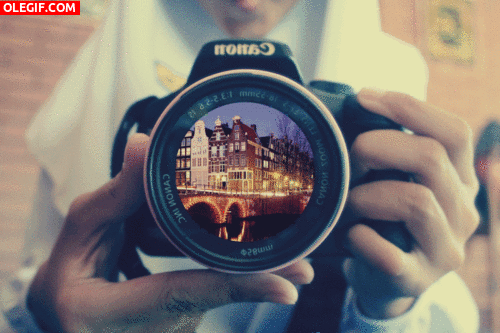home
>
Blog
>
Photography
>
Complete guide to taking landscape photography like an expert
Complete guide to make …
What inspires you to photograph a landscape? Perhaps tranquility, amazement, admiration and very surely desire to be in that majestic place; And it is precisely that a good landscape photography inspires imposing and reflects the patience and connection of the photographer with the moment to achieve a postcard photo.
By causing so many emotions and qualifications you might think that taking a photo of, for example, beautiful sunset landscapes is only for the most experienced photographers, but in reality If we put our mind to it, we can be the authors of a photograph that, in addition to getting applausetransmit something very profound to the observer.
We are inspired! And we created this Landscape photography guide made to inspire you to capture that space that can be within the city, in one of your vacation destinations, a place you frequent on weekends or if we plan it: in that dream place that you have always wanted to visit.
So there are no limits to achieving a very good photograph. Here we will tell you everything you need to know to achieve the best landscape photos.
Index
- What is landscape photography?
- Types and styles of landscape photography
- Necessary elements for landscape photography
- Composition of a landscape photograph
- Techniques to achieve the best landscape photography
By name it is easy to find the answer to this question. This term refers to landscape photography and is a very popular photography style so it is based on capture the beauty of the environment and make static space an image that transmits and connects.
Landscapes are often highly admired and sought after by people to make different compositions. Surely, even for your aunt or your mother who are looking for good morning messages with beautiful landscapes to send by WhatsApp.
So thinking about your audience and of course, your growth as a photographer, we will tell you how to represent the incredible natural space that you probably have in front of you. If you don’t have it, don’t worry, because landscape photography is not just for the greenest place or full of waterfalls, you can even opt for this style of photography within urban sites. It’s all about being creative through the lens and getting the most out of your image!

Source: Giphy
Remember that not all landscapes are the same and that places may not always remain the same due to climate change or the time of year. At this point the originality, the angle from which the landscape and the frame are photographed. So it is worth experimenting.

As we already explained, landscape photographs do not refer only to an open space in the middle of nature, you can also take a great photo of this category in the city. Whenever your objective to capture is a space of this type, you are taking landscape photographs.
So, starting from that you can photograph a natural and urban landscape, it is important to be clear that there are other kind of landscapes, For example, him night, rural, tourist, aerial, panoramic, winter, minimalist, long exposure, among others.
One of the first clues to know how to photograph landscapes of this type is “preview in our head, and with our eyes, the photograph we want to take. More if possible in this type of photography; in which the study of the area, hours, light and environment interferes in the final result of the shot ”, recommends the Xataka technology blog.
In order for you to better understand what type of photography you want to take, we detail in this photography manual some of the kind of landscapes we mentioned before:
Daytime Landscape Photography
This type of landscape photography is what is done in the day and with natural light. To achieve a good capture it is recommended to avoid very sunny days because the light can subtract details of the landscape and even cause the photo to be overexposed. Try first thing in the morning or late in the afternoon (blue hour).
Night Landscape Photography
This type of photography is done at night especially to capture the stars. As a night photography guide we recommend expose more light to give more effect to the photo, this in case we have the light of the moon. However, if it is very dark, you will surely require artificial light. You could take advantage of and give a Bokeh effect to your landscape, we will tell you how in this guide.
Long Exposure Landscape Photography
These types of landscape photographs are used to give you move to an element within the scenesuch as a star, lightning bolt, car lights, etc. It also adds texture and color to the image. This is because “the amount of light that gradually enters through the shutter towards the sensor of your camera, stores in the latter the information captured by the lens during the entire time the shutter remains open”, narrates the EdLatam of the New York Institute of Photography.
Urban landscape photography
The objective of this landscape photograph is capture the essence of a street landscape, one of those that we often use as a photo for landscape profiles on social networks.

Source: Photographer’s Blog
Another very famous technique for Ansel Adams, American, one of the most famous landscape photographers, is that of black and white landscapes. This master of photography created the System of Zones that “looked for a way to obtain the correct exposure in a photograph based on a gray scale,” says the Photography Club.
These are some of the photographs of this teacher, who assured that “landscape photography is the photographer’s ultimate test and often the ultimate disappointment ”.

Source: Oscar in photos

Source: Photographic Culture
Photography Styles
✅ Romantic: landscape photos with blur, that is, shallow focus and backlighting.
✅ Descriptive: it captures reality as it is and is not manipulated, but seeks to see very detailed landscapes.
✅ Abstract: They are the types of landscapes in art that are not based on detail but on simplicity but with some element in the photo that gives a different essence to the scene.
✅ Environment: There are two types of environmental landscape photography, the one that highlights the beauty of nature to invite care for it and the one that captures the destroyed environments to raise awareness of the human being’s damage to the ecosystem.
We will start by explaining that although landscape photography requires a lot of attention, you don’t need to have the most expensive equipment not all types of lenses that exist. If you are starting in this photographic world, pay attention to this check list:
- Camera in manual mode to handle the photographic exposure triangle yourself. In this article you can learn to master it like an expert.
- Tripod to make sure the camera is fixed when taking photos of the most beautiful landscapes in the world.
- Batteries and memory. These must be part of you, it does not matter if you are taking a photo of a landscape or a face, but you cannot leave them for the world.
- If you have the possibility of having a trigger cable, this will be very useful to shoot remotely and without moving the camera. So you can see landscapes with better results.
- Neutral Density or ND filter to control the amount of light entering the camera while shooting landscapes.
- More than an element, we advise you to take a photography course with a travel blogger to consolidate concepts, know first-hand what elements he uses to take landscape photographs and be ready to shutter.
Ready to start capturing the best landscapes? We know you are eager to know the tricks to make your photos look amazingThat is why it is important that you know how to compose a photo of a landscape. In passing we advance you some techniques that we will talk about later.
The horizon: the key to beautiful sunset landscapes
There are conflicting opinions in this regard, as some tend to locate the horizon in the center, while others do not. What you should know is that you must be very attentive, if the sky is loaded with information, for example, clouds and reflections, you could leave it in the center or better, much lower to give prominence to the sky. A beautiful sunset landscape deserves it.
If on the contrary the information is below the horizon do not be afraid to raise the horizon line and let the landscapes of flowers and butterflies, for example, shine.

Source: Andrés Jildén – Xacata
Close-up: useful for landscapes for photoshoot
Photographing a landscape does not exactly refer to making wide shots, so fix the element (s) that will be in the foreground, thus giving the image depth of field. This is very useful for landscapes in photoshoots, where people are the protagonists.

Source: Photographer’s Blog
Contrasts: to achieve paradisiacal landscapes
Enhance your landscape photography through color, so look at the contrasts that the environment has and do magic with these. The most common are blue skies and desert soils.

Source: Paul Bowles – National Geographic

Lightroom presets to upload your landscape photos to Instagram
The lines: to simulate paintings of natural landscapes
Fundamental advice at this point: the frame. We recommend you focus on a goal so you don’t lose focus, in case you are in a landscape in the middle of branches. Xacata recommends building on lines in rock formations, trees, roads, or clouds.

Knowing how to compose dream landscapes, now you only need to know the techniques to achieve the best photographs.
The first recommendation has to do with the aperture of the diaphragm, which must be between f / 8 and f / 16. This because you have to find that the landscape photography is in focus.
While speed does not have an exact value for this type of photography, it will depend on the scene, however, we advise you long exposures if you want to capture landscapes with clouds, for example. It’s about experimenting with landscape photography depending on your goal: to freeze motion or capture it. Capture your world recommends “play with the shutter speed to photograph the movement of the water”.
Regarding the ISO avoid increasing it too much so that the photo is not grainy. If you have good lighting you could leave it at 100. This will depend on the light conditions and if you are facing cold and warm landscapes.
Finally, remember to take the photos in RAW format to work them later in an editing program and not lose quality. This will be the advice of any manual of landscape photography technique.
Now that you have all the tricks and tips, it will be possible to achieve expert photographs. So to be even more pro we give you the last advice: be patient, probably the best landscape photography will not be the first one you capture, but you will be very close to it.
Visit that space several times and see what is the best time to capture the most beautiful landscape that you have always dreamed of capturing. Let’s do it!

![📸 Landscape photography: guide to become an expert [2021]](https://big-photography.com/wp-content/uploads/2021/02/fotografia-paisajes-1140x570.png)





![Black Background Photo Guide Like a Pro [2021]](https://big-photography.com/wp-content/uploads/2021/02/fotos-fondo-negro-profesional-75x75.png)
Discussion about this post